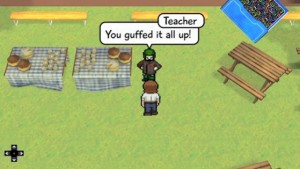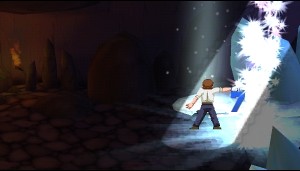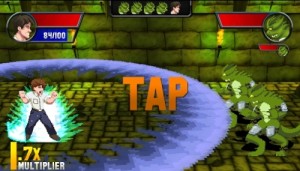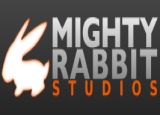 How many of Saturday Morning’s episodes do you have planned out at this point? Do you think your own planning process parallels the way writers for Saturday morning cartoons typically work?
How many of Saturday Morning’s episodes do you have planned out at this point? Do you think your own planning process parallels the way writers for Saturday morning cartoons typically work?
We’ve written out six complete episodes, but have synopses for twenty. A lot of the really cool and really outrageous stuff happens towards the end of those twenty episodes. We wanted to take the time to establish our characters and universe before we started doing completely crazy things. We might reorganize the episodes just to get some of that more fantastical stuff out the gate faster.
I’d say that our planning process is way off from how a real writer would operate. Since we’re writing for an interactive medium and it focuses exclusively on Marty for the vast majority of player time, we have to write the story with that in mind. The player gets to see the villain brooding in his hideout every now and then, but most of the story is focused on how Marty is personally responsible for thwarting whatever plan that episode focuses on. Most Saturday morning cartoons would balance time between following different characters at different places and points in time. We can only do that to a certain extent without constantly wrestling control from the player, so we really have to write Marty-specific narratives.
How easily were you able to implement Saturday Morning’s sprites-on-3D presentation in Unity? Did the Mighty Rabbit programmers have to learn a lot of clever tricks and code new tools to make this work, or are 2D objects pretty well supported in Unity by default?
It wasn’t too hard to implement our visual style. We knew that we wanted traditional sprite sheet-driven characters so we searched for tools that could help us quickly accomplish that in Unity. We stumbled upon Above and Beyond Software’s “Sprite Manager 2,” which allowed us to get sprites into the game the first day we started working on it. As programmers, we’ve actually had the hardest time implementing things like dynamically constructed comic bubbles. The sprites were a cakewalk thanks to the middleware, haha.
 On the one hand Saturday Morning’s battle system resembles a pretty traditional turn-based setup, but on the other hand, it looks like we’ll be treated to a ton of little in-battle minigames that promise a really neat twist. How are these triggered exactly, and just how much stress did all these specials put on the artists and programmers?
On the one hand Saturday Morning’s battle system resembles a pretty traditional turn-based setup, but on the other hand, it looks like we’ll be treated to a ton of little in-battle minigames that promise a really neat twist. How are these triggered exactly, and just how much stress did all these specials put on the artists and programmers?
The battle system in Saturday Morning RPG is very interactive. We’ve been designing it from day one to make it as fun as we possibly could. I know that probably sounds like a super obvious statement, but I don’t think a lot of RPGs approach their battle system from that angle. I think they emphasize complexity or strategy over fun, which results in battle systems that are only fun when you’re fighting monsters that make use of that strategy – smaller minions are rarely fun. We wanted players to want to fight – we didn’t want them to feel like battles were a nuisance that needed to be skipped with “auto-fight” or “escape” options. With that in mind we brainstormed what could make battles more fun, taking some influence from things like Paper Mario, Costume Quest, Legend of Dragoon, and Panzer Dragoon Saga.
 We put in active defense for enemy attacks; if you tap during an enemy attack you will block, resulting in an effectiveness rating based on your timing. And then we added in mini-games on certain attacks. I stress “certain” because there are several attacks that don’t require a mini-game to be played. This was to create a balance between players who wanted to be passive versus active during battle. The ones that do trigger mini-games vary wildly. The “Joystick” attack will trigger one of six different Atari style minigames ranging from Pong to Asteroids; simpler minigames like sliders and gauges exist as well. In a way, it’s a little bit like we jammed WarioWare into our battle system to some extent.
We put in active defense for enemy attacks; if you tap during an enemy attack you will block, resulting in an effectiveness rating based on your timing. And then we added in mini-games on certain attacks. I stress “certain” because there are several attacks that don’t require a mini-game to be played. This was to create a balance between players who wanted to be passive versus active during battle. The ones that do trigger mini-games vary wildly. The “Joystick” attack will trigger one of six different Atari style minigames ranging from Pong to Asteroids; simpler minigames like sliders and gauges exist as well. In a way, it’s a little bit like we jammed WarioWare into our battle system to some extent.
This didn’t create too many extra assets for the artists, but did require a lot of extra implementation time for the programmers. It was totally worth it, though, because it makes the battle system truly unique. Saturday Morning RPG has so many little touches that we added in for the player to be surprised by – on top of the mini-games each attack has a unique way of killing an enemy. I won’t spoil any of these, but they’re generally pretty funny.


